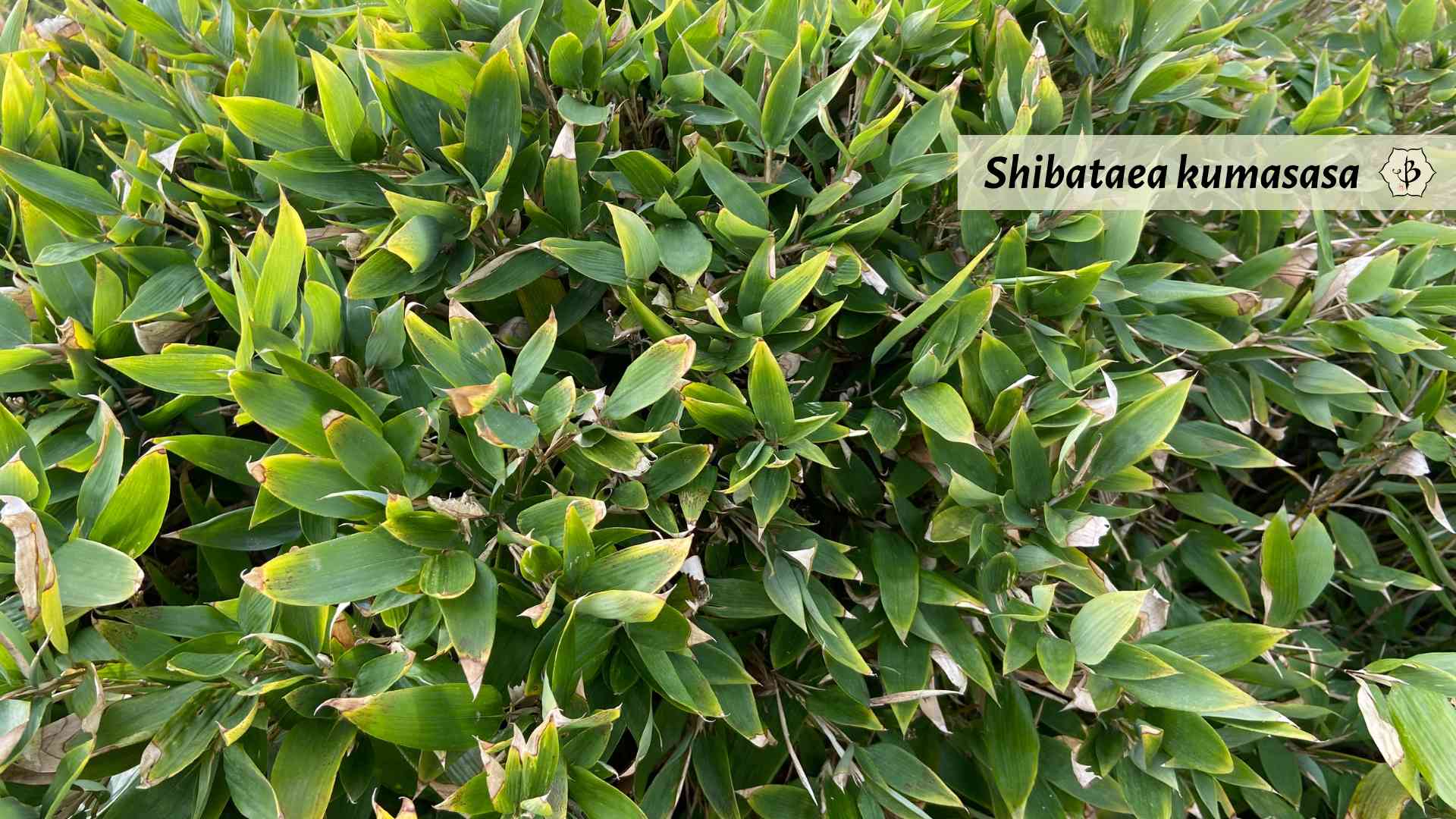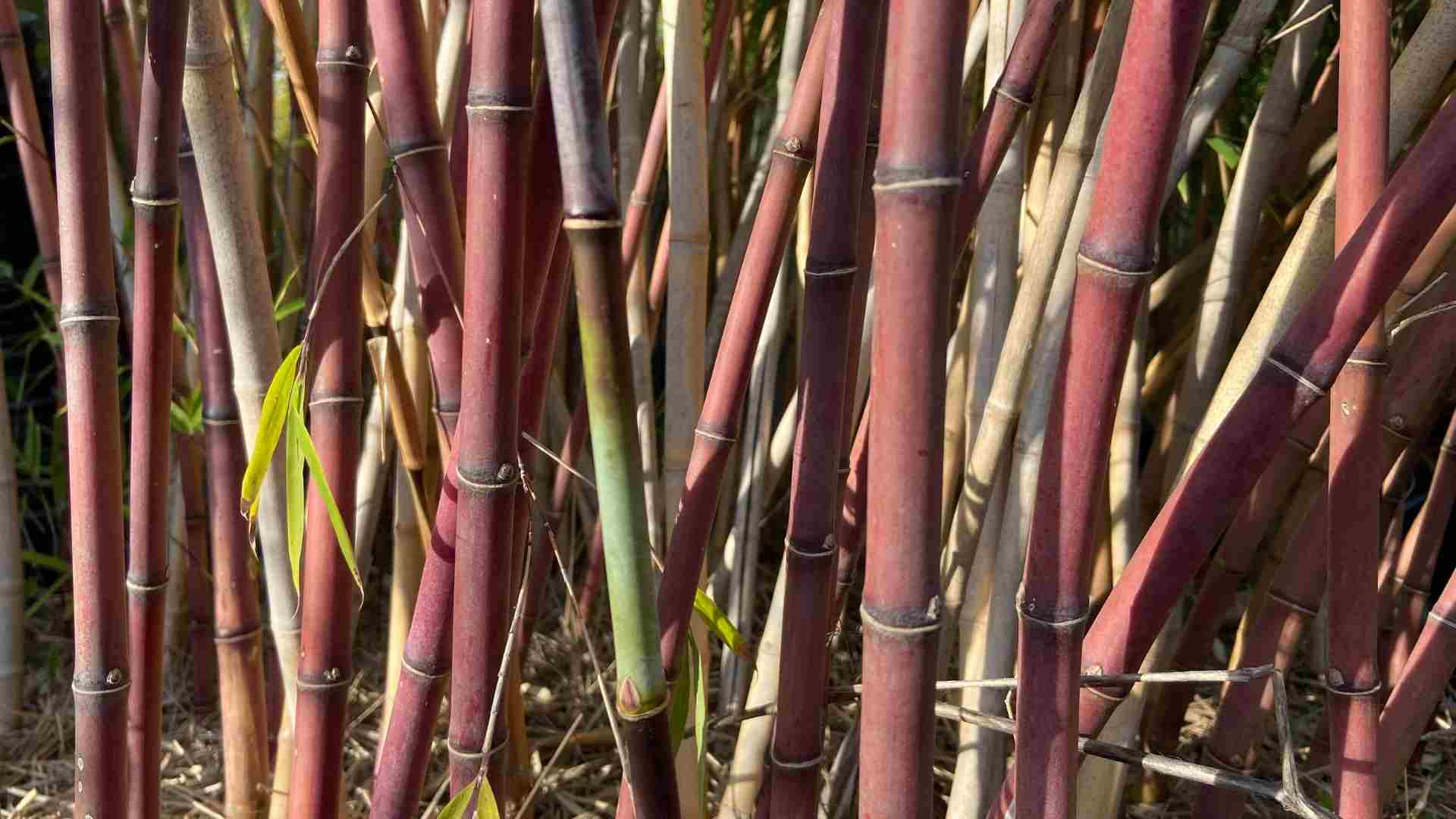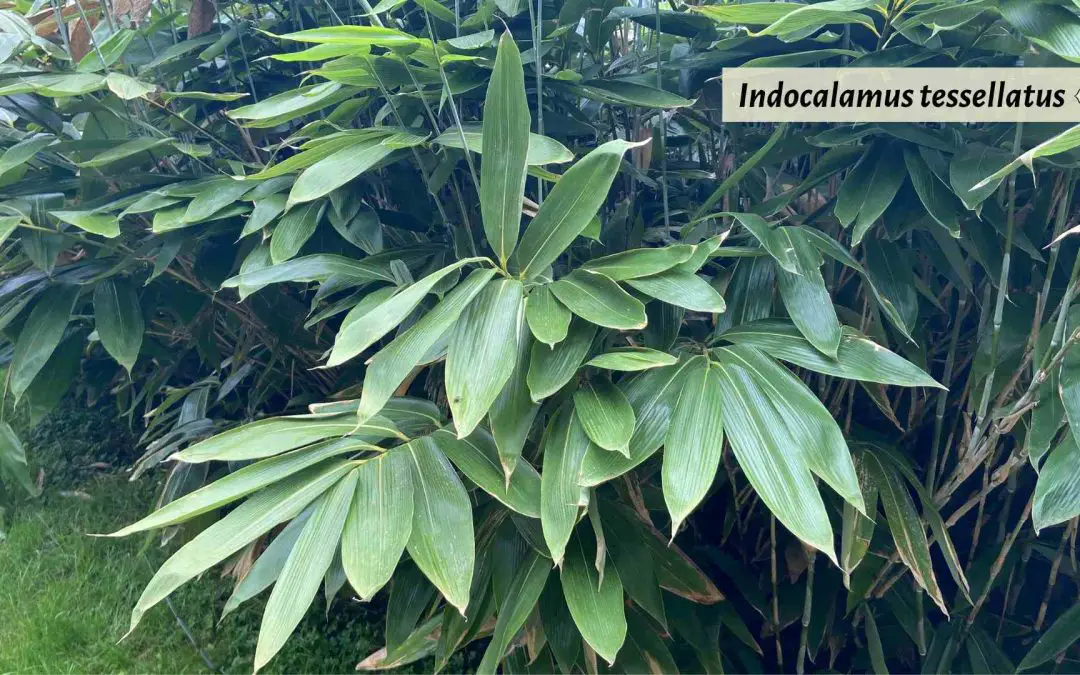With so many varieties of bamboo to choose from for your garden, one can easily develop an obsession. As you become a connoisseur of grasses, the quest for unusual and exotic bamboo specimens can become an endless pursuit.
We’ve already written a great assortment of articles on selecting the best varieties of bamboo for your garden, based on your climate and your personal preferences. Check out some of these helpful posts:
- 10 Best bamboo varieties for your garden
- Best clumping bamboos: Never run again
- Native bamboos of North America
- Bamboo with stripes
- Blue bamboo
- Growing bamboo in the desert
- 12 Cold hardy bamboo varieties
- Growing bamboo indoors
- Best bamboo varieties for poles
Once you’ve planted the ideal varieties of bamboo for your purposes and conditions, whether it’s a privacy hedge or bonsai garden, you may want to diversify. Everybody enjoys growing Black bamboo (Phyllostachys nigra) and Oldham’s bamboo (Bambusa oldhamii). But it’s fun to add a few exotic varieties of bamboo, with their unusual characteristics.
Also, if you’re looking for a place to purchase live bamboo plants, be sure to check out our directory of specialty nurseries.
NOTE: This article first appeared in February 2020, most recently in May 2024.
Exotic bamboo for the cultivated gardener
The following varieties of bamboo are less common and not necessarily easy to find. But they can add a little more character to an already interesting collection of bamboo.

Chimonobambusa quadrangularis
As the name quadrangularis may suggest, this unusual type of bamboo is notable for its square-shaped culms. In a garden full of round bamboo canes, this specimen should stand out. The large nodes also add to its interesting appearance.
This running bamboo from East Asia is fairly cold tolerant, down to about 10 or 15º F. More importantly, it doesn’t like to get too hot. Square bamboo requires ample water, cool nights and daytime temperatures in the 70s or lower. It prefers to grow in the bright shade rather than in the direct sun all day.
To show off the unusual culms and nodes, keep the lower portion of the plant well-pruned and free from foliage. The plant can get up to about 25 feet tall, with 1-1.5 inch canes.
Chimonocalamus pallens (Grey bamboo)
A truly exotic variety of bamboo from the subtropical mountains of southern China, this one is difficult to find and not widely grown. But its light green and grayish leaves can provide an interesting color contrast among your darker green bamboos.
This clumping bamboo is fairly slow-growing and prefers warmer climates. It also does fairly well in dry conditions, but it’s not particularly cold-hardy. Growers report that it also does much better in the shade. Direct sunlight tends to burn the leaves and turn them yellow.
Chusquea culeou ‘Caña Prieta’
This South American clumping bamboo is a perfect candidate for mild climates. It can even tolerate frost, unlike most varieties of Chusquea. And because it’s a clumper, it won’t spread and take over your yard. But it does need very well-drained soil and should not be grown in a container.
There are many varieties and subspecies of Chusquea culeou, and most of them get about 15-20 feet tall, with approx. 1 inch culms. The canes often take a nice red or purple color in the fall.
Caña Prieta is among the most cold-hardy and colorful varietals. The contrast of the white culm sheaths against the red canes produces an especially attractive effect.

Dendrocalamus minor
One of the smaller and lesser-known species of the ginormous genus Dendrocalamus, D. minor is a bit more tame and manageable than its colossal cousins. Unlike Asper or Giganteus, the culms of this clumper bamboo only get about 3 inches in diameter and no more than 30-40 feet tall.
Like some ornamental bamboo, the branches don’t start until several feet up from the ground, which creates a more pleasing appearance. Another advantage of this species is its hardiness. Most varieties of tropical Dendrocalamus will suffer at the first signs of frost, but D. minor is noticeably more resilient.
For the true collector, there are a couple of subspecies to look for, including ‘Ghost Bamboo’, with some stunning, colorful variegation in the culms.
Indocalamus tessellatus
Giant Leaf Bamboo can add some interesting contrast to your garden. The leaves grow over a foot long and a few inches wide, and like most bamboo, they stay green all year round. But the plant won’t get more than 6 to 8 feet tall, so it looks good under taller trees and can also serve as a low hedge. Super cold-hardy, this is a running bamboo, but not the fastest-spreading specimen. (See the featured image at the top of the article.)

Phyllostachy viridis ‘Robert Young’
We’ve covered this variety elsewhere, in our post about Striped Bamboo, but it’s worth mentioning again because it’s just such a beautiful variety. The vibrant yellow canes with green stripes are simply stunning.
But beware, this is a running bamboo, like all varieties of Phyllostachys, and a mighty big one at that. It can get up to 40 feet tall with canes about 3 inches in diameter. Definitely use some type of root barrier if you’re going to plant this aggressive species.
The Robert Young bamboo works especially well as a large privacy screen. The poles are also big and strong, in addition to being quite attractive, and can be useful for construction. The fresh shoots are also tasty. (See our in-depth article on edible bamboo shoots for more about that.)
Phyllostachys violascens
This variety is something of a mystery. It is a running bamboo, but not quite as large and aggressive as the Robert Young. It can typically get up to about 20 feet tall with 2 inch diameter culms.
Mostly, the canes are a deep green, but occasionally they will have stripes. Sometimes yellow, sometimes reddish-brown. It’s most likely to see these colors on the fresh, young shoots. Prune the lower portion of the plant to make the culms more visible.
It’s also a great choice for cold climates, as it’s hardy down to about 0º F.

Shibataea kumasaca (Ruscus bamboo)
A less common variety, but perfect for low hedges. Foliage — made up of short, stubby leaves — is unusually dense, with pencil-thin culms that only get about 5-7 feet tall. This is an excellent choice for small gardens with limited space, or as a complimentary plant alongside larger bamboo specimens.
Despite its diminutive size, this species is a runner, and may become invasive if not properly contained. Tolerates shady areas and cold hardy down to 5º F.

Conclusions
If you’re looking to round out your bamboo collection, you might actually want to plant some square bamboo (Chimonobambusa quadrangularis). Or maybe you’d rather add some color, be it something violet (Phyllostachys violascens) or something grey (Chimonocalamus pallens).
In any case, you’ll want to make sure you’re choosing a bamboo that’s suitable for your climate. Some species (like square bamboo) prefer cool weather, and others (like Grey bamboo) are more comfortable in tropical and subtropical climes. You also have to choose between compact clumpers (Chusquea culeou) and fast-spreading runners (Phyllostachy viridis).
Also, be sure to check our more recent articles on Chocolate bamboo and Hiroshima bamboo, two more unusual and exceptionally attractive species.
PHOTO CREDIT: Indocalamus tessellatus also goes by the name giant leaf bamboo, for obvious reasons. Photo by Fred Hornaday.

























